* * * *
 Wednesday, April 29, 2015 – I last reviewed a full set of Sunday readings on March 8. That post – The “Big Ten” and Jesus with a whip – included readings on the Ten Commandments and “Jesus cleansing the temple, after arming Himself with a whip of cords.”
Wednesday, April 29, 2015 – I last reviewed a full set of Sunday readings on March 8. That post – The “Big Ten” and Jesus with a whip – included readings on the Ten Commandments and “Jesus cleansing the temple, after arming Himself with a whip of cords.”
The readings for next Sunday – that is, for May 3, 2015 – are: Acts 8:26-40, Psalm 22:24-30, 1 John 4:7-21, and John 15:1-8. Or see Fifth Sunday of Easter. Highlights include the first reading – Acts of the Apostles – telling the story of Philip and the Ethiopian eunuch. That story is illustrated at left by the painting, The Baptism of the Eunuch, by Rembrandt:
Philip the Evangelist was told by an angel to go to the road from Jerusalem to Gaza, and there he met the Ethiopian eunuch… The eunuch was sitting in his chariot reading the Book of Isaiah, and had come to Isaiah 53:7-8. Philip asked the Ethiopian, “Do you understand what you are reading?” He said[,] “How can I understand unless I have a teacher to teach me?” …Philip told him the Gospel of Jesus, and the Ethiopian asked to be baptized. They went down into some water and Philip baptized him.
Wikipedia noted that as a eunuch the Ethiopian couldn’t be part of the church community. That’s from Deuteronomy 23:1: “No one who has been emasculated by crushing or cutting may enter the assembly of the LORD.” (In the NIV. The King James Version – the one God uses – puts it more delicately: “He that is wounded in the stones, or hath his privy member cut off, shall not enter into the congregation of the LORD.“)
There’s even speculation that not only was the man “born a eunuch,” but also that he was gay. See The Ethiopian Eunuch – There Is A Good Possibility He Was A Gay Man, which added that if the man was born a eunuch, he could be admitted to the church community, according to Jeremiah. That is, a “physically intact, born eunuch, could enter the congregation of Israel,” according to the “Babylonian Talmud, Tractate Yebamoth, Folio 81a,” and Jeremiah 34:19.
Be that as it may… The point of Acts 8:26-40 is that God’s Love is Universal, which is also the main lesson of the Book of Jonah. See Jonah and the bra-burners:
Clearly, the Book of Jonah … is the product of that school of Jewish thought which was universalist and which opposed the nationalist view… It is the universality of God and the attribute of divine mercy that are the lessons of Jonah. Those who think of the book as nothing more than the story of a man and a whale miss the whole point. (E.A.)
In plain words, Jonah ain’t about no stinkin’ whale! (The whale was a sideshow.) Turning to the Gospel for this day, in John 15:1-8 Jesus described Himself as The True Vine, “an allegory or parable given by Jesus in the New Testament found only in the Gospel of John:”
The Old Testament passages which use this symbol appear to regard Israel as faithless to Yahweh and/or the object of severe punishment. Ezekiel 15:1–8 in particular talks about the worthlessness of wood from a vine (in relation to disobedient Judah). A branch cut from a vine is worthless except to be burned as fuel. This appears to fit more with the statements about the disciples than with Jesus’ description of himself as the vine.
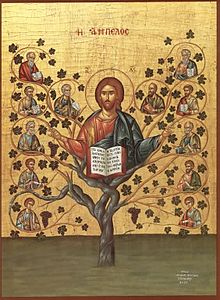 See Wikipedia, which included some “numerous Old Testament passages which refer to Israel as a vine.” (With the image at right, an “Icon of Christ as the true Vine.”) For example, Psalm 80:8 said of God, “You transplanted a vine from Egypt; you drove out the nations and planted it.” (Referring to the Exodus from Egypt and into the “land of milk and honey.”)
See Wikipedia, which included some “numerous Old Testament passages which refer to Israel as a vine.” (With the image at right, an “Icon of Christ as the true Vine.”) For example, Psalm 80:8 said of God, “You transplanted a vine from Egypt; you drove out the nations and planted it.” (Referring to the Exodus from Egypt and into the “land of milk and honey.”)
Consider also John 15:6, where Jesus said, “Whoever does not abide in me is thrown away like a branch and withers; such branches are gathered, thrown into the fire, and burned.” He was apparently referring to Psalm 80:16. That passage – in the NIV – referred to the same vine as Psalm 80:8, “Your vine is cut down, it is burned with fire; at your rebuke your people perish.“
Which just goes to show that “Jesus knew and quoted the psalms frequently (and so should we).” See for example, On the Psalms up to September 21.
But Jesus also knew the old prophets as well. For example, the first part of Isaiah 5 (verses 1 through 7), is commonly referred to as his “Song of the Unfruitful Vineyard,” and so Jesus seemed to be referring back to that metaphor as well.
And see Jeremiah 2:21, in which God said (in the NIV), “I had planted you like a choice vine of sound and reliable stock. How then did you turn against me into a corrupt, wild vine?” And see also Hosea 10:1 – and also verse 2 – read, in the GOD’S WORD® Translation:
The people of Israel are like vines that used to produce fruit. The more fruit they produced, the more altars they built. The more their land produced, the more stone markers they set up [to honor other gods]. They are hypocrites. Now they must take their punishment. God will tear down their altars and destroy their stone markers. (E.A.)
 (For more on this prophet, see On Hosea and the prostitute, which noted in passing that Hosea 8:7 is the source of the well-known phrase to reap the whirlwind, as derived in turn “from the proverbial phrase ‘They that sow the wind, shall reap the whirlwind.’” That post included the image at left, with the caption: “But no, not that Gomer…” (Gomer was Hosea’s wife.))
(For more on this prophet, see On Hosea and the prostitute, which noted in passing that Hosea 8:7 is the source of the well-known phrase to reap the whirlwind, as derived in turn “from the proverbial phrase ‘They that sow the wind, shall reap the whirlwind.’” That post included the image at left, with the caption: “But no, not that Gomer…” (Gomer was Hosea’s wife.))
And finally, see What did Jesus mean … “I am the True Vine?” It noted first that this was the “last of seven I am declarations of Jesus recorded only in John’s Gospel.” (In all seven – found only in John’s Gospel – Jesus “combines I AM with tremendous metaphors which express His saving relationship toward the world.” See I am for the full list.) Then came this:
He said that no branch can even live, let alone produce leaves and fruit, by itself. Cut off from the trunk, a branch is dead. Just as a vine’s branches rely on being connected to the trunk from which they receive their energy to bear fruit, Jesus’ disciples depend on being connected to Him for their spiritual life and the ability to serve Him effectively.
All of which goes to show first that God’s love is universal, and second that we should try to imitate that all-encompassing love. Or as Jesus aptly summarized the entire Bible:
Hear what our Lord Jesus Christ said: “You shall love the Lord your God with all your heart, with all your strength, and with all your mind. This is the first and great commandment, and the second is like unto it: you shall love your neighbor as yourself. On these two commandments hang all the Law and the Prophets.
That’s from Matthew 22, verses 37-40, emphasis added. See also On “what a drag it is,” which referred to this “‘Cliff’s-Note’ summary given by Jesus.”
In plain words, our goal in life should be to “live in full communion,” with both God and even our most obnoxious neighbor. (And be good stewards of nature besides…)
* * * *

“Earth Day Flag created by John McConnell…”
* * * *
Re: Jeremiah 34:19. Part of a passage where Jeremiah warned of an apparent upcoming judgment:
And those who transgressed my covenant and did not keep the terms of the covenant that they made before me, I will make like[c] the calf when they cut it in two and passed between its parts: 19 the officials of Judah, the officials of Jerusalem, the eunuchs, the priests, and all the people of the land who passed between the parts of the calf 20 shall be handed over to their enemies and to those who seek their lives. Their corpses shall become food for the birds of the air and the wild animals of the earth. (E.A.)
The “between the parts of the calf” referred back to Genesis 15, regarding God making a covenant with Abraham: “Then [God] said to him, ‘I am the Lord who brought you from Ur of the Chaldeans, to give you this land to possess.’ 8 But he said, ‘O Lord God, how am I to know that I shall possess it?’ 9 He said to him, ‘Bring me a heifer three years old, a female goat three years old, a ram three years old, a turtledove, and a young pigeon.’ 10 He brought him all these and cut them in two, laying each half over against the other…” (The “cutting” ceremony effectively sealed the contract.)
The lower image is courtesy of Earth Day – Wikipedia, the free encyclopedia. See also Remembering the Purpose of Earth Day – which was yesterday, April 28 – and also Pope Francis Urges All People to Protect the Earth On 45th Anniversary of Earth Day. For a contrasting take on the “politics” of Pope Francis,” see On the “Gospel of Marx.”
* * * *

 The writer of this first-in-time Gospel is generally identified as the same
The writer of this first-in-time Gospel is generally identified as the same  Note that Mark 16:8 says, “
Note that Mark 16:8 says, “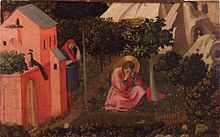 And before closing it should be noted that the Gospel of Mark itself presents a kind of
And before closing it should be noted that the Gospel of Mark itself presents a kind of  Which explains some of the symbolism in the Ter Brugghen painting, including the lion at Mark’s elbow and the open book he’s reading. (The open book can be a symbol of peace, or as a symbol of public justice. See
Which explains some of the symbolism in the Ter Brugghen painting, including the lion at Mark’s elbow and the open book he’s reading. (The open book can be a symbol of peace, or as a symbol of public justice. See 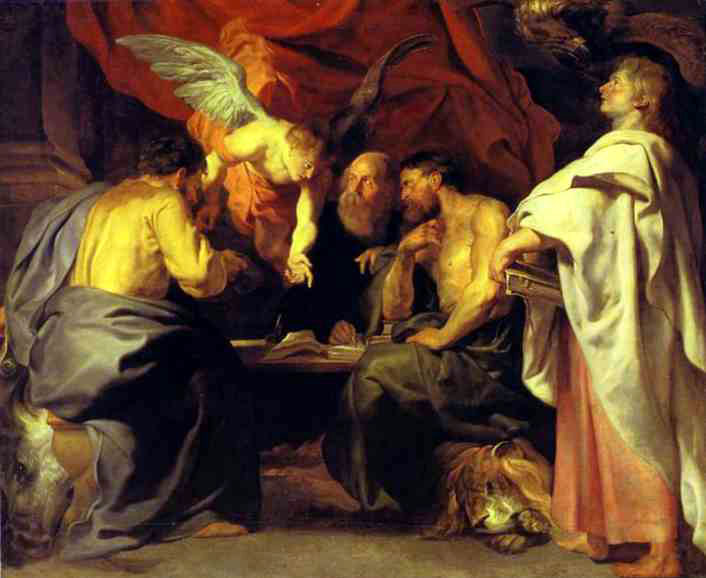
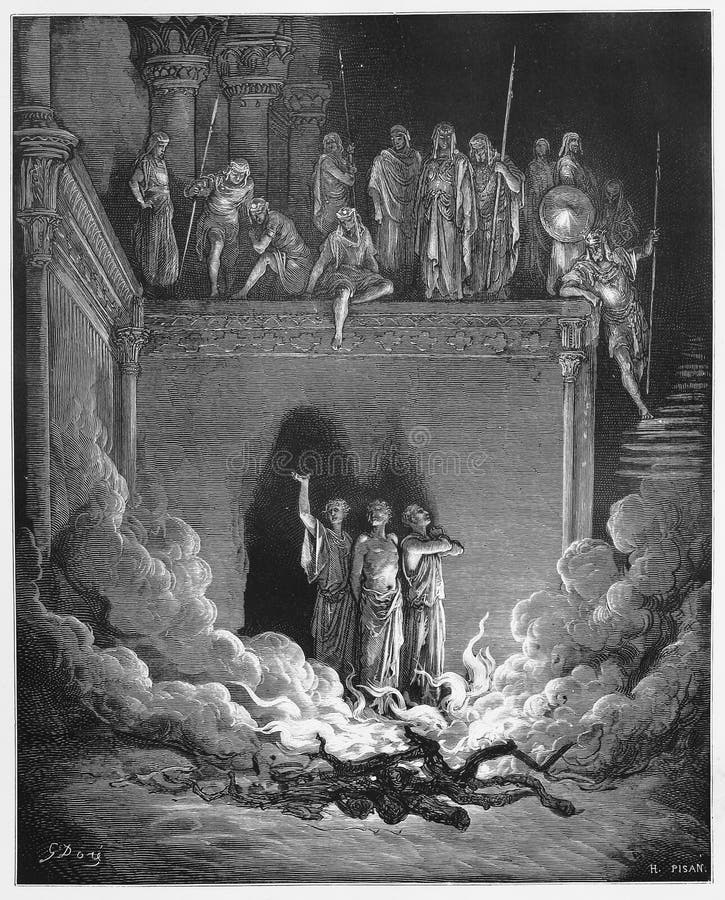
 Daniel 1:4
Daniel 1:4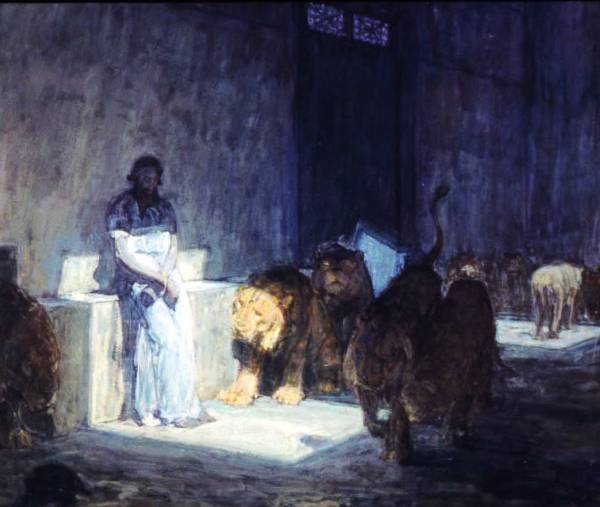
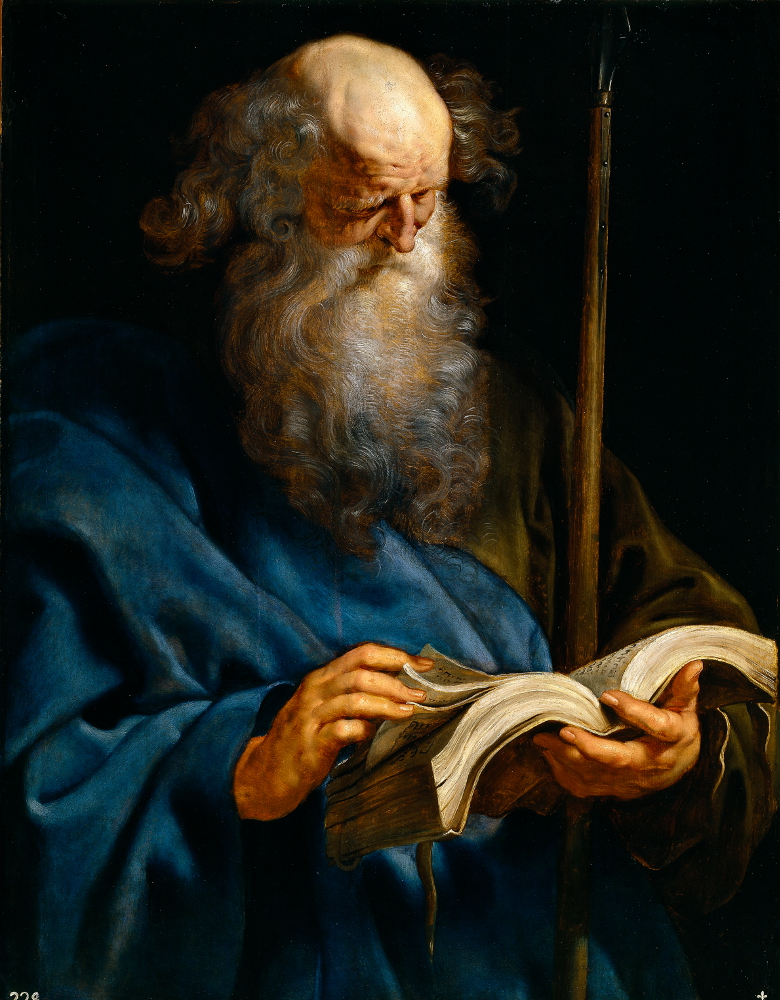
 In other words, if it hadn’t been for the millions upon millions of people who came to believe in the
In other words, if it hadn’t been for the millions upon millions of people who came to believe in the 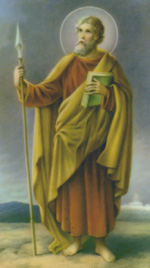 Of course Paul’s
Of course Paul’s 
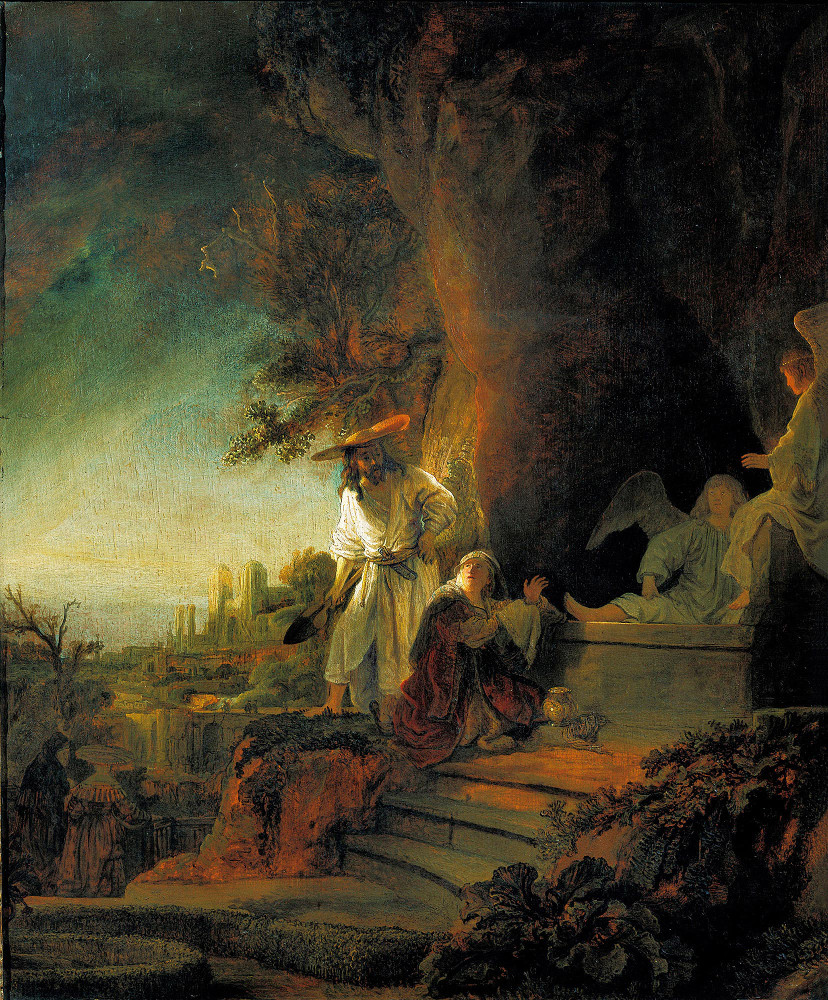
 For another interesting article, see
For another interesting article, see 
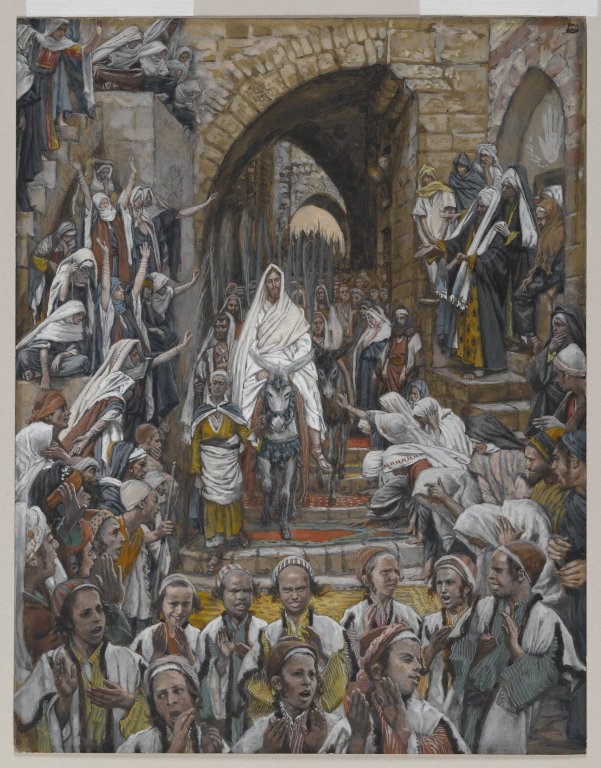
 In
In  See
See 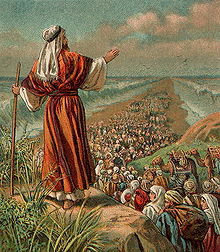 All of which referred back to the
All of which referred back to the 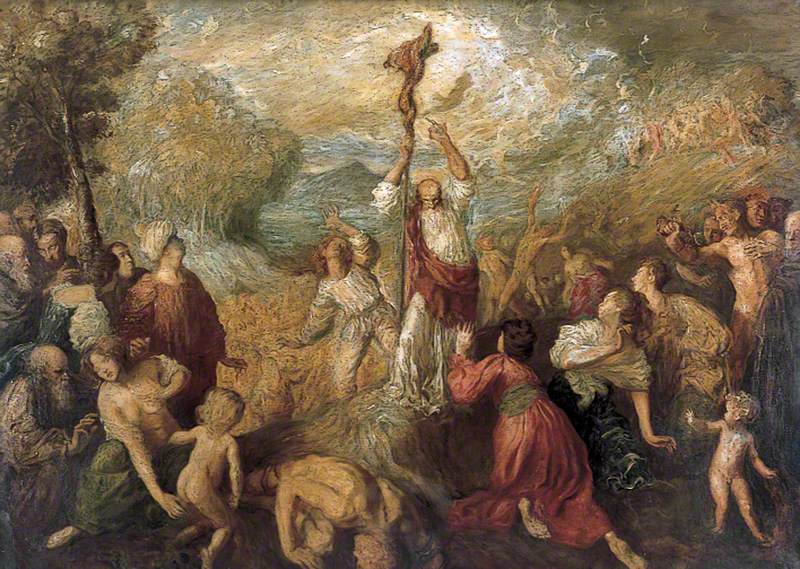
 The lower image is courtesy of
The lower image is courtesy of